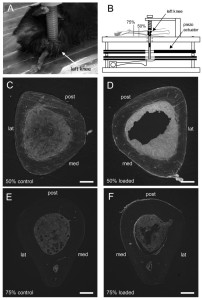In evaluating potential height increase routines, there are questions that have to be answered true to potentially be effective. Asking these questions before attempting a routine or supplement, will help to determine if that supplement or routine could possibly be effective although there are many supplements that can be synergestic.
1a. Does the method increase longitudinal bone growth?
b. Or does the method stimulate an increase the thickness of the bone in a longitudinal direction(top of head or bottom of heel)?
c. Or does the method target another tissue that is a determinant in height(for example: cartilage or skin at the top of the head)?
d. Does the method alter alignment(posture or loosening of ligaments via relaxin)?
The rest of these questions will involve assuming that 1a was the question that was answered yes to as b-d would have different follow up questions. Note that GH and IGF-1 are a maybe in terms of answering question 1a. They tend to encourage tissue growth but do not necessarily encourage chondrogenic differentiation(although IGF-1 may). Something like IGF-2 is something more likely to increase height as it is involved in an earlier development state. And the growth plate is at an earlier development state than full bones. GH and IGF-1 are present at all developmental states whereas something like IGF-2 is not.
2. Does the method involve degradation of cortical bone?
b. Does the method stretch cortical bone(plastic deformation which requires extreme loads)?
This likely has to be an important criteria in the success of a height increase routine. The end of growth involves the fusion of cortical bone between the diaphysis and the epiphysis. Distraction osteogenesis involves the cracking of cortical bone. Cortical bone is likely like a large constraint on longitudinal bone growth. Note: LSJL likely degrades cortical bone via an increase in fluid flow.
 D is the LSJL loaded bone and C is not. There’s definitely degration of the trabecular bone in D and F. In D the LSJL cortical bone looks thicker and stronger which would make it harder to grow taller. However in F there are some signs of degradation. First, note that in E, that the inner bone is a fairly solid circular object but in F there is a part that juts outward on the upper lateral region of F this could be a sign of cortical bone degradation. And note that 50% is the dead center of the bone which is not a likely target for increasing bone length. 75% is much closer to the epiphysis and since most longitudinal bone growth occurs at the epiphysis this is very promising that the necessary cortical bone degradation can occur to enable bone elongation to occur.
D is the LSJL loaded bone and C is not. There’s definitely degration of the trabecular bone in D and F. In D the LSJL cortical bone looks thicker and stronger which would make it harder to grow taller. However in F there are some signs of degradation. First, note that in E, that the inner bone is a fairly solid circular object but in F there is a part that juts outward on the upper lateral region of F this could be a sign of cortical bone degradation. And note that 50% is the dead center of the bone which is not a likely target for increasing bone length. 75% is much closer to the epiphysis and since most longitudinal bone growth occurs at the epiphysis this is very promising that the necessary cortical bone degradation can occur to enable bone elongation to occur.
The bone loading only occurred for 3 days. If bone loading had occurred longer it is possible that the protrusion of the inner bone would extend far enough to reach the outer point of bone enabling a neo-growth plate to form. The mice were 14 weeks old which is fairly fair along the skeletal maturity process. Mice growth plates don’t fuse but they do become dysfunctional and this is the time when growth cessation occurs. So a potential protrusion caused by cortical bone degradation at a late skeletal maturity state is promising for the possible effectiveness of LSJL on adults.
3. Does the method stimulate chondrogenic differentiation?
Bones have not yet been shown to be capable of interstitial growth and only through an intermediary tissue(cartilage) are they able to grow longer. It would be possible to grow taller through the articular cartilage(which is capable of endochondral ossification) at the longitudinal ends of the bones but there does not as of yet seem to be an effective way of doing that.
The creating of an intermediary tissue like cartilage within the bone seems to be necessary to make the bones grow longer. LSJL upregulates chondrogenic genes.
In addition, the chondrogenic intermediary must progress through the various stages and undergo hypertrophy to push the bone apart. But it appears that endochondral ossification tends to be the standard procedure for chondrogenic tissue.
